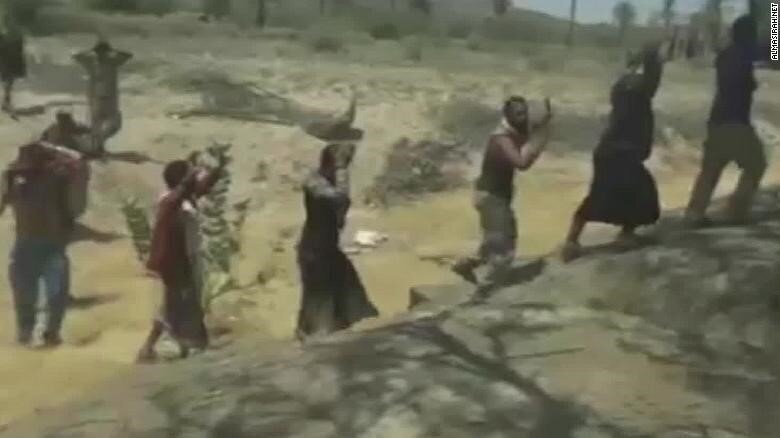Hoist by its own petard: How Saudi Arabia was pushed against the wall in Yemen

Tehran - A spate of fruitful Yemeni operations against Saudi Arabia has underscored transformation of anti-Saudi forces into an obstinate actor gaining in military sophistication, increasing pressure on Riyadh to acknowledge what described as a democracy-promotion campaign has only diminished its influence in Yemen and sullied its reputation globally.
Eyebrows raised when a swarm of drones struck facilities at the heart of Saudi Arabia’s oil industry last month.
The attack was regarded highly sophisticated since it circumvented a patchwork of air defense systems inside the oil kingdom.
The attacks were claimed by a coalition of Yemeni fighters, mainly made up of Ansarullah and more than half of the former Yemeni Army.
Saudi Arabia and its western backers – the US, UK, France, and Germany – have accused Iran of perpetrating the strike, but no compelling evidence proving the claim has yet been publicized.
Last week, the Yemeni forces unveiled a separate set of military operations against Saudi Arabia that proved even more surprising for the global audience.
The Yemeni forces broadcast footage they said was of an assault against Saudi Arabia in August that killed or wounded 500 soldiers with near 2,700 soldiers surrendering.
The assault targeted the southern region of Najran, with videos aired showing armored vehicles hit by blasts, along with large piles of weapons and surrendering soldiers.
Saudi Arabia has described Ansarullah’s claims as part of a “misleading media campaign”. However, it has not directly disconfirmed the Yemeni assertions.
Turning point in conflict?
The attacks showed the Yemeni fighters are capable of engaging in major cross-border offensives against Saudi Arabia, threatening the status-quo of the five-year-old war in Yemen.
What was a small religious movement emerged in Yemen’s north in the 1980s, is now an actor of regional importance.
Ansarullah fought six unsuccessful insurgencies against the Saudi-backed government of Yemen in the 2000s.
Following the Arab uprisings in early 2010s, the movement drew support from a wide array of local groups, tribesmen and military officers who shared a resentment of feeling marginalized at the hands of a corrupt and paralyzed government.
The Saudi invasion and the economic blockade of the poorest Arab country has pushed many more to join the ranks of anti-Saudi forces.
Currently, a hybrid range of forces make up the military element of Ansarullah, with some 60 percent of the Yemeni army previously loyal to former president Ali Abdullah Saleh has allied with the group.
Thanks to the alliance, the group has become equipped with Yemeni Army’s weapons systems ranging from tanks and technical vehicles to anti-tank guided missiles and long-range ballistic missiles.
Massive transformation
They have come a long way since the early months of the war.
The Houthis have significantly increased their cross-border strikes since December 2017, launching many assaults on military and economic installations in Saudi Arabia.
Missiles have been time and again fired into Saudi cities, reaching as far as the capital Riyadh, and since January 2018 they’ve attacked using drones.
During a presser late last month, Saudi military spokesman Turki al-Maliki claimed that Saudi Arabia had been targeted with 232 ballistic missiles and 258 drones in September.
The increase in the number of attacks is in a large part due to the Houthis’ growing capabilities to manufacture drones and missiles.
During the years, their technology has become much more sophisticated and far more lethal.
Attacks bode well for Yemen
The attacks showed the ragtag Ansarullah has transformed from a small opposition movement into a battle-hardened military force capable of hitting Saudi Arabia where it hurts the most.
The ragtag Ansarullah has transformed from a small opposition movement to a battle-hardened military force threatening the status-quo of the five-year-old war in Yemen.Saudi Arabia and its western allies have long accused Iran of directing, arming and funding the movement. But such claims fly in the face of realities.
Despite the imbalance of wealth and weapons, the Yemenis have stalemated the US-backed forces of Saudi Arabia and the United Arab Emirates.
Saudi Arabia has invested billions of dollars in defense systems from the US, but those weapons have failed to shield the kingdom from incoming attacks.
The UAE seems to have realized that the war in Yemen is a hopeless case. That’s why it announced recently it would pull out of the Yemen conflict, leaving the Saudis increasingly isolated.
The assaults on the Saudi oil facilities and the major ground offensive have spurred efforts to end a conflict long overdue for resolution.
The war has triggered the world’s worst humanitarian disaster, with thousands of civilians dying from preventable causes, including malnutrition, disease, and poor health.
Let’s hope Saudi Arabia will come to its senses and stop shooting itself in the leg.
